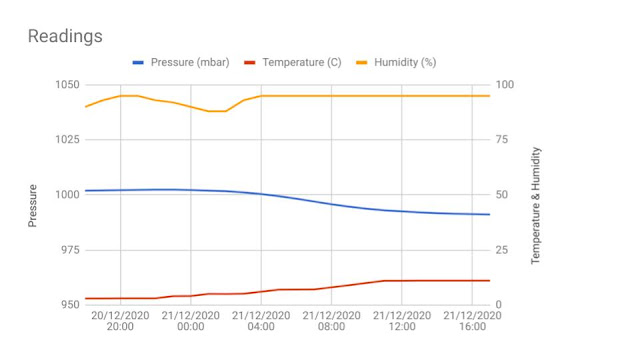Microbit weather station

Microbit V1 weather station Update: Feb 2021: I've published the microbit V2 version using Bluetooth (BLE) Update 7th Jan 2021 : I've found an error in my DS3231 extension, so now it is feasible to use the microbit's Bluetooth (BLE) - which means the second microbit won't be necessary. And I fixed my Google Apps Script code for the chart! This project lets you make regular hourly readings of weather measurements, store them, and upload them to a phone or computer. The date and time of each reading are also recorded. You can use the readings to plot a chart, for example, to show how the weather changed over time. Here's a set of readings over 24 hours: These are the measurements I am using for this project: Barometric air pressure Temperature Humidity You can add more "instruments" - for example, I plan to add a home-made rain gauge, as described in this blog. The weather station can be self-contained, powered from a couple of batteries perhaps. You can...
